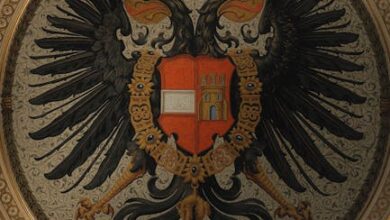Elon Musk vs. the Regulators: A High-Stakes Game of Innovation and Oversight

Elon Musk vs. the Regulators: A High-Stakes Game of Innovation and Oversight
Estimated Reading Time: 8 minutes
- Elon Musk’s ventures (Tesla, SpaceX, Neuralink, X) constantly push technological boundaries, leading to frequent clashes with global regulatory bodies.
- The fundamental tension lies between Musk’s “move fast and break things” approach and regulators’ inherent need for prudence, safety, and ethical oversight.
- Key battlegrounds include Tesla’s Autopilot safety, SpaceX’s orbital debris and spectrum management, Neuralink’s ethical brain-computer interfaces, and X’s content moderation policies.
- Regulatory scrutiny, though often seen as a hindrance, is vital for ensuring public safety, fostering fairness, and guiding responsible technological advancement.
- Navigating this future requires agile regulatory frameworks, proactive engagement and transparency from innovators, and informed advocacy from the public.
- The Tesla Tussle: Autopilot, Safety, and Environmental Standards
- SpaceX and the Final Frontier: Navigating Orbital Debris and Spectrum Wars
- Neuralink and the Ethical Maze of Brain-Computer Interfaces
- X (formerly Twitter): Free Speech, Content Moderation, and Global Governance
- Actionable Steps for Navigating the Future of Innovation and Regulation:
- Conclusion
- FAQ Section
Elon Musk, a name synonymous with disruption, innovation, and an unapologetic drive to redefine humanity’s future, operates at the bleeding edge of technological advancement. From electric vehicles and reusable rockets to brain implants and social media platforms, his ventures consistently push boundaries. Yet, with groundbreaking innovation inevitably comes the watchful eye of regulatory bodies – a necessary counterbalance designed to ensure safety, fairness, and ethical conduct. This dynamic interplay between Musk’s audacious vision and the often-cautious hand of global regulators forms a perpetual, high-stakes battle.
The core tension is clear: Musk’s companies thrive on rapid iteration, bold claims, and a “move fast and break things” philosophy, while regulators are inherently designed for prudence, extensive testing, and established protocols. This article explores the various battlegrounds where Musk’s ambitions clash with the frameworks built to protect public interest, fostering both conflict and, sometimes, grudging progress.
“Welcome back to TechCrunch Mobility, your hub for all things “future of transportation.”
The Tesla Tussle: Autopilot, Safety, and Environmental Standards
Tesla, perhaps Musk’s most mainstream success, has been a frequent subject of regulatory scrutiny, particularly concerning its advanced driver-assistance systems. The promise of “Full Self-Driving” (FSD) has captivated enthusiasts and critics alike, but its deployment on public roads, often described as “beta,” has raised significant safety questions.
The National Highway Traffic Safety Administration (NHTSA) in the U.S. has launched multiple investigations into Tesla’s Autopilot and FSD features, scrutinizing accidents involving these systems. Questions linger about the systems’ capabilities, driver monitoring, and the potential for misuse. Regulators grapple with how to classify and oversee technologies that blur the lines between assistance and autonomy, aiming to foster innovation without compromising public safety.
Beyond self-driving, Tesla has navigated a complex landscape of environmental regulations. Initially, as a pioneer in electric vehicles, Tesla often benefited from government incentives and a favorable regulatory environment. However, as it matured into a dominant automotive player, it faced increasing scrutiny over manufacturing practices, battery recycling, and the broader environmental impact of its global operations.
SpaceX and the Final Frontier: Navigating Orbital Debris and Spectrum Wars
Musk’s aspirations extend far beyond Earth’s surface with SpaceX, which aims to make humanity a multi-planetary species. Yet, even in the vastness of space, regulators play a critical role. The Federal Aviation Administration (FAA) oversees launch safety and environmental impact for all rocket launches from U.S. soil. SpaceX’s rapid development of its Starship program, for instance, has led to numerous regulatory reviews, delays, and investigations following test failures and unexpected incidents.
Perhaps the most prominent regulatory challenge for SpaceX lies with its Starlink satellite internet constellation. Thousands of Starlink satellites now orbit Earth, providing global broadband access. While a remarkable feat, this influx of spacecraft has sparked concerns from astronomers about light pollution obscuring celestial observations and has ignited debates about orbital traffic management and the growing threat of space debris. The Federal Communications Commission (FCC) and international bodies like the International Telecommunication Union (ITU) are tasked with managing spectrum allocation and mitigating orbital congestion, often clashing with SpaceX’s aggressive deployment schedule.
Neuralink and the Ethical Maze of Brain-Computer Interfaces
Few of Musk’s ventures are as ethically charged and scientifically complex as Neuralink, which seeks to develop implantable brain-computer interfaces. The prospect of connecting the human brain directly to computers promises revolutionary advancements for treating neurological disorders and enhancing human capabilities. However, it also plunges headfirst into profound ethical, medical, and privacy concerns.
The U.S. Food and Drug Administration (FDA) is the primary gatekeeper for medical devices like Neuralink’s implants. The FDA’s rigorous approval process demands extensive preclinical testing, careful assessment of risks and benefits, and multi-phase human clinical trials to ensure both safety and efficacy. Neuralink faced initial rejections and delays from the FDA due to safety concerns regarding the device’s battery, potential for wiring migration within the brain, and difficulties in safely extracting the device. While human trials eventually commenced, the journey underscores the slow, deliberate pace required for such intrusive and potentially transformative medical technologies, often at odds with Musk’s ‘warp speed’ approach.
X (formerly Twitter): Free Speech, Content Moderation, and Global Governance
Musk’s acquisition of Twitter, now rebranded as X, immediately plunged him into the contentious world of content moderation, free speech, and global internet governance. His stated commitment to “free speech absolutism” has frequently collided with evolving international regulatory frameworks designed to combat misinformation, hate speech, and illegal content.
The European Union’s Digital Services Act (DSA) mandates strict responsibilities for large online platforms regarding transparency, content moderation, and user protection, imposing significant fines for non-compliance. Similarly, other nations have their own laws concerning data privacy (like GDPR and CCPA), defamation, and censorship. X has faced pressure and investigations from regulators worldwide over its content policies, data handling practices, and approach to platform safety, illustrating the immense challenge of reconciling a platform owner’s vision with diverse global legal and societal expectations.
Real-World Example: The ongoing saga of Tesla’s “Full Self-Driving” (FSD) beta serves as a prime example of this clash. Despite being marketed as a revolutionary step towards autonomy, the system has prompted numerous investigations by the NHTSA due to incidents and consumer complaints. Tesla has had to issue software recalls to address safety features, highlighting the regulatory pressure to ensure that advanced technology meets safety standards before widespread public deployment, regardless of its innovative potential.
Actionable Steps for Navigating the Future of Innovation and Regulation:
- For Regulators: Embrace Agile and Outcome-Based Frameworks: Instead of rigid, prescriptive rules that can quickly become obsolete, regulators should explore agile frameworks focused on desired safety and ethical outcomes. This allows innovators more flexibility in how they achieve compliance, fostering innovation while maintaining essential safeguards.
- For Innovators: Proactive Engagement and Transparency: Companies at the cutting edge should proactively engage with regulatory bodies early in the development cycle. Open dialogue, sharing data, and transparently addressing potential risks can build trust, inform regulators, and potentially streamline approval processes, preventing costly delays and conflicts down the line.
- For the Public: Informed Advocacy and Ethical Participation: As technologies become more complex, public understanding and engagement are crucial. Individuals should stay informed about the implications of new innovations, participate in public discourse, and advocate for policies that balance progress with ethical considerations, privacy protection, and public safety.
Conclusion
The saga of Elon Musk versus the regulators is a microcosm of a larger, ongoing societal debate: how do we harness the transformative power of technological innovation while simultaneously safeguarding public interest, ethical standards, and global stability? Musk’s companies push the boundaries, forcing regulators to adapt, evolve, and sometimes scramble to catch up. This tension, while often fraught with conflict, is ultimately a necessary crucible for responsible progress.
The path forward demands flexibility from regulators, responsibility from innovators, and informed participation from the public. Only through this delicate dance can we hope to realize the benefits of groundbreaking technologies without succumbing to their potential pitfalls, ensuring a future where innovation serves humanity wisely.
What are your thoughts on the balance between rapid innovation and necessary oversight? Do regulators move too slowly, or do innovators take too many risks? Share your perspective in the comments below!
FAQ Section
What is the core tension between Elon Musk’s ventures and regulators?
The fundamental tension arises from Musk’s companies prioritizing rapid innovation, bold claims, and a “move fast and break things” philosophy, which often clashes with regulators’ inherent need for prudence, extensive testing, established protocols, and ensuring public safety, fairness, and ethical conduct.
Which of Musk’s companies have faced significant regulatory scrutiny?
All of Elon Musk’s major ventures—Tesla (electric vehicles, autonomous driving), SpaceX (reusable rockets, satellite internet), Neuralink (brain-computer interfaces), and X (formerly Twitter, social media platform)—have been subjects of intense regulatory scrutiny due to their disruptive nature and potential societal impact.
What are the main regulatory challenges for Tesla’s Full Self-Driving?
For Tesla’s Full Self-Driving (FSD), regulators like the NHTSA grapple with ensuring the safety of a “beta” technology on public roads. Challenges include scrutinizing accident data, verifying system capabilities, monitoring driver engagement, and classifying a technology that blurs the lines between driver assistance and full autonomy.
How does SpaceX’s Starlink constellation impact space regulation?
SpaceX’s Starlink, with its thousands of satellites, raises concerns about orbital debris, traffic management, and light pollution for astronomers. Regulatory bodies like the FCC and ITU are challenged with managing spectrum allocation and mitigating congestion in Earth’s orbit, often conflicting with SpaceX’s aggressive deployment pace.
Why is Neuralink’s development particularly challenging for regulators?
Neuralink, developing implantable brain-computer interfaces, faces profound ethical, medical, and privacy concerns. The FDA imposes rigorous approval processes involving extensive preclinical and human clinical trials to ensure the safety and efficacy of such intrusive, transformative medical devices, often requiring a much slower pace than Musk’s typical approach.





